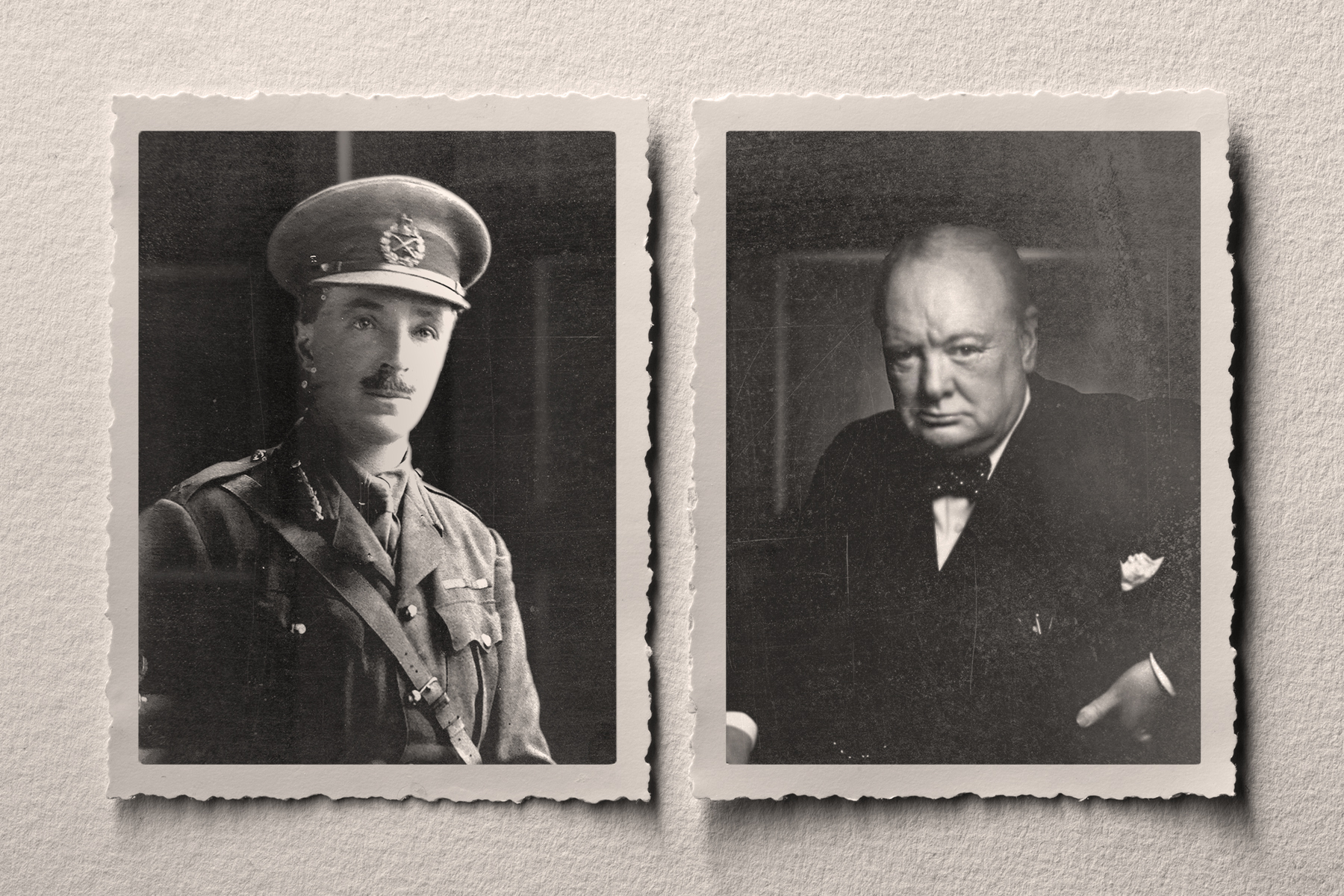Top Stories
Unraveling the Attempted Assassination of Churchill’s Ally in Canada

On January 24, 1965, a telegram arrived in St. John’s, Newfoundland, inviting Major General Sir Hugh Tudor to the state funeral of his long-time friend, Sir Winston Churchill. The message, sent at 15:49, was an acknowledgment of Tudor’s past as a prominent military figure, despite his near-total obscurity by that time. Living in self-imposed exile for almost forty years, the now ninety-three-year-old Tudor had not seen Churchill for twenty-seven years. Yet, their friendship endured, marked by decades of correspondence that waned as both men grew disillusioned with the empire they once served.
Their lives intertwined during World War I, where Churchill held a leadership role and Tudor distinguished himself as an artilleryman. Tudor’s rapid ascent in the military was complemented by numerous commendations for bravery. By the war’s end, he was a well-respected major general with a young family and a promising future. However, a subsequent conflict in Ireland, where he commanded the controversial Black and Tans, altered the course of his life. This period was marked by brutal combat against Irish rebels, ultimately leading to a tarnished legacy that drove him to Newfoundland in 1925.
Settling in a place with a rich yet tumultuous history, Tudor transitioned from military life to a quieter existence in Newfoundland. He took to the codfish trade, a strategic choice to remain inconspicuous. Yet, the shadow of his past loomed large, with whispers of an assassination plot against him surfacing decades later.
The legend of a failed assassination attempt on Tudor emerged in the early 1950s. Reports suggest two Irish gunmen traveled to St. John’s, intent on targeting the general. One of the supposed hitmen, struck by guilt, sought confession from a local priest. In a twist of fate, this priest alerted the archbishop, who then notified the authorities. Although these accounts are part of Newfoundland’s folklore, they lack solid evidence.
Historians and local figures have examined the story’s viability. Larry Dohey, a respected historian, recalls hearing the tale from an older priest, but is hesitant to endorse its truth. John Fitzgerald, another historian, found scant documentation supporting the assassination theory during his investigations. Even Tim Pat Coogan, a noted Irish author, referenced the plot, but his work did not provide substantial proof.
Critics of the assassination narrative highlight the improbability of such an undertaking in the 1950s. Tudor was nearly eighty, and many of his adversaries had either died or moved on with their lives. The logistical challenges and risks involved in executing a plot against an elderly man in a remote location further diminish the story’s credibility.
Despite the skepticism surrounding the narrative, it remains a captivating part of Newfoundland’s history. Gerald Barnable, a retired judge, emphasizes the allure of the story, noting that the frequent retelling lends it an air of plausibility. He argues that while the IRA may have been less capable of foreign operations by the 1950s, the narrative continues to resonate due to its dramatic elements.
Ultimately, the tale of the assassination attempt on Major General Sir Hugh Tudor intertwines with the broader context of Irish-British relations, personal legacies, and the lasting impact of historical conflicts. While no definitive proof supports the plot’s existence, the story endures as a testament to the complexities of a life marked by war, friendship, and exile.
-

 Education3 months ago
Education3 months agoBrandon University’s Failed $5 Million Project Sparks Oversight Review
-

 Science4 months ago
Science4 months agoMicrosoft Confirms U.S. Law Overrules Canadian Data Sovereignty
-

 Lifestyle3 months ago
Lifestyle3 months agoWinnipeg Celebrates Culinary Creativity During Le Burger Week 2025
-

 Health4 months ago
Health4 months agoMontreal’s Groupe Marcelle Leads Canadian Cosmetic Industry Growth
-

 Technology3 months ago
Technology3 months agoDragon Ball: Sparking! Zero Launching on Switch and Switch 2 This November
-

 Science4 months ago
Science4 months agoTech Innovator Amandipp Singh Transforms Hiring for Disabled
-

 Education3 months ago
Education3 months agoRed River College Launches New Programs to Address Industry Needs
-

 Technology4 months ago
Technology4 months agoGoogle Pixel 10 Pro Fold Specs Unveiled Ahead of Launch
-

 Business3 months ago
Business3 months agoRocket Lab Reports Strong Q2 2025 Revenue Growth and Future Plans
-

 Technology2 months ago
Technology2 months agoDiscord Faces Serious Security Breach Affecting Millions
-

 Education3 months ago
Education3 months agoAlberta Teachers’ Strike: Potential Impacts on Students and Families
-

 Science3 months ago
Science3 months agoChina’s Wukong Spacesuit Sets New Standard for AI in Space
-

 Education3 months ago
Education3 months agoNew SĆIȺNEW̱ SṮEȽIṮḴEȽ Elementary Opens in Langford for 2025/2026 Year
-

 Technology4 months ago
Technology4 months agoWorld of Warcraft Players Buzz Over 19-Quest Bee Challenge
-

 Business4 months ago
Business4 months agoNew Estimates Reveal ChatGPT-5 Energy Use Could Soar
-

 Business3 months ago
Business3 months agoDawson City Residents Rally Around Buy Canadian Movement
-

 Technology2 months ago
Technology2 months agoHuawei MatePad 12X Redefines Tablet Experience for Professionals
-

 Business3 months ago
Business3 months agoBNA Brewing to Open New Bowling Alley in Downtown Penticton
-

 Technology4 months ago
Technology4 months agoFuture Entertainment Launches DDoD with Gameplay Trailer Showcase
-

 Technology4 months ago
Technology4 months agoGlobal Launch of Ragnarok M: Classic Set for September 3, 2025
-

 Technology4 months ago
Technology4 months agoInnovative 140W GaN Travel Adapter Combines Power and Convenience
-

 Science4 months ago
Science4 months agoXi Labs Innovates with New AI Operating System Set for 2025 Launch
-

 Top Stories2 months ago
Top Stories2 months agoBlue Jays Shift José Berríos to Bullpen Ahead of Playoffs
-

 Technology4 months ago
Technology4 months agoNew IDR01 Smart Ring Offers Advanced Sports Tracking for $169










